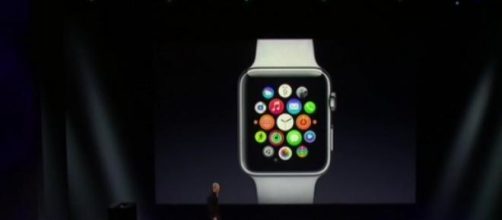This is the year of the wearable mania and it's much due to the Apple Watch, which will go on sale later this month. At least that's what investors are betting on, and what analysts predict. Wearables have been around for years, especially in the fitness sector, with the likes of Jawbone and Fitband devices. What's different now? Why are you more likely to buy a wearable gadget in 2015? Because now, Apple wants in.
"Smart wearables are about to take a major step forward with the launch of the Apple Watch this year," says IDC's Ramon Llamas, research manager at the firm's wearables team.
He believes the Apple Watch will raise "the profile of wearables in general" and cause a surge in interest, which was already visible at Consumer Electronics Show this January, in Las Vegas. I can't tell how many different brands of wrist, face and neck wearables I've seen at the show, and most likely this will continue to be so next year - in fact, Llamas thinks basic wearables won't disappear and will continue to grow.
The difference between basic wearables and smart wearables is this: your Polar fitness watch that tracks calories and exercise time is a basic wearable; the upcoming Apple Watch, which can run third-party applications and connects to your iPhone, is a smart wearable.
IDC thinks both are going to be huge.
Smart wearables will grow a whopping 510.9% this year, to 25.7 million units, and basic wearables will rise 30% to 20 million units and establishing a new high. The worldwide quarterly report on these devices says the wrist is technology's most sought after real estate on our body. Wrist-dedicated devices will make up for more than 80% of the total market.
It's not all due to Apple, although he iPhone maker's watch is poised to become the market leader in smartwatches from the get go, according to recent predictions from Gartner. Watches already in the market, like Motorola's Moto 360 and Samsung's Gear branded devices, should benefit from the craze around wearables. Google is also planning on its own smartwatch with partners Intel and TAG Heuer.
In 2015, we will also see some movement in the modular wearable segment - gadgets you can move around your body with a strap or a clip, and smart clothing, such as safety jackets like the Visijacket than won an innovation award at CES 2015, or smart socks.
"The explosion of wearable devices was clearly led by fitness bands, which until recently commanded prices that provided comfortable margins, but those days are changing," states Ryan Reith, who oversees IDC's quarterly device trackers. Because prices have fallen so much, some manufacturers are now bundling them with their smartphone offerings. "While Apple's entry into the market is symbolic, the key to success will be to create compelling use cases for the average consumer," adds Reith. Indeed, there is no killer app for smartwatches right now. But that won't stop their success.
The Apple Watch will hit stores on April 24th, and the pre-orders begin this Friday, April 10th - the same day rival Samsung is releasing the new Galaxy S6 and S6 Edge.

